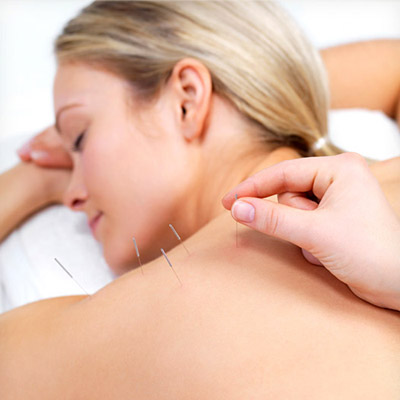Acupuncture Treatment
What is Acupuncture?

Acupuncture is a safe and effective natural therapy that is used to heal illness, prevent disease and improve well-being. Tiny, hair-thin needles are inserted into specific points in the body, where they are gently stimulated to trigger the body's natural healing response. Acupuncture is effective for controlling pain and can regulate the body's physiological functions to treat various internal dysfunction and disorders.
According to traditional acupuncture theory, there are twelve energy channels called "meridians" running vertically along the length of the human body, each one linking to a specific organ. Illness is caused by obstructed energy flow at certain points along the meridians. Acupuncture therapy stimulates meridian flow and harmonizes the body's energy to influence the health of both body and mind.
Researchers have begun to examine in Western medical terms the mechanisms by which acupuncture brings about physiological change. Studies have shown that acupuncture influences both the central and peripheral nervous systems. Further evidence indicates that acupuncture stimulates the release of brain chemicals such as endorphins, which function to relieve pain. Research also suggests that acupuncture increases immune system functioning, improves the circulatory system, decreases muscle tightness, and increases joint flexibility. Clinical trials lend credence to these results: acupuncture has been shown to bring about significant improvement for a variety of diseases.
In countries such as Japan and China, which make up about a fifth of the world's population, acupuncture has been established as a primary form of health care for thousands of years, where the acupuncturist's role was comparable to that of the physician. Today in such countries, acupuncture treatment remains an integral component of the health care system, offered in conjunction with Western medicine. In North America, acupuncture has drawn growing public attention in recent years. The flood of headlines in the mass media describe this expanding interest and acceptance: The Washington Post, for example, reported in 1994 that an estimated 15 million Americans, or about 6 percent of the population, have tried acupuncture for various ailments that include chronic pain, fatigue, nausea, arthritis, and digestive problems.
In 1995, the US Food and Drug Administration (FDA) reclassified acupuncture needles from the Class III (investigational device) category to the Class II (safe and effective but requiring restrictions) category. In November 1997, the US National Institute of Health held a major conference to discuss the use, efficacy, and safety of acupuncture. Based on their conclusions, the NIH issued a report entitled "Acupuncture: The NIH stated that acupuncture is a useful method for the treatment of a variety of conditions such as post-operative pain, nausea, migraines, arthritis, menstrual cramps, low back pain, and tennis elbow. Furthermore, the NIH acknowledged that the side-effects of acupuncture are considerably less compared with other medical procedures such as drugs and surgery. In addition, the NIH made a recommendation to US insurance companies to provide coverage of acupuncture treatments for certain conditions.
This expanding paradigm is changing the face of medicine as we know it. Acupuncture has already been accepted as one of the more common forms of pain management therapy in many pain clinics in US and Canadian hospitals. As a result, acupuncture is becoming accessible for more and more Canadians. Doctors are recommending acupuncture for their patients for various conditions and insurance plans are beginning to include acupuncture treatments.
Benefits of Acupuncture
Acupuncture has been effectively used for the treatment of back pain, headache, migraine, and sports injuries. However, acupuncture provides more than pain relief. It is helpful in treating anxiety, insomnia, digestive problems, abdominal, menstrual cramps, weight control, infertility and much, much more.
Acupuncture is a safe and effective technique for treating many health problems. In 1979, the World Health Organization (WHO) issued a provisional list of 41 diseases responsive to acupuncture. These include respiratory problems, various pain conditions, gastrointestinal problems, and premenstrual syndrome.
Conditions Commonly Treated with Acupuncture
- Smoking Addiction
- Neck or Cervical Pain
- Shoulder Pain
- Lower Back Pain
- Sciatica
- Hip Pain
- Anxiety
- Depression
- Insomnia
- Headaches & Migraines
- Chronic Fatigue Syndrome
- Sinus Problems
- Arthritis & Arthritic Pain
- Jaw and Face Pain
- Irritable Bowel Syndrome
- Tennis and Golfer's Elbow
- Sports Injuries
- Motor Vehicle Injuries
- Bladder Infection
- Stress Related Disorders
- Menstrual & PMS Problems
- Obesity & Weight Control
